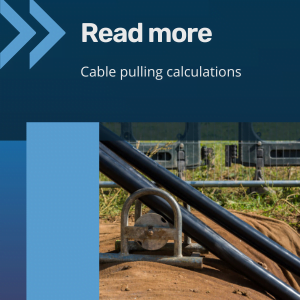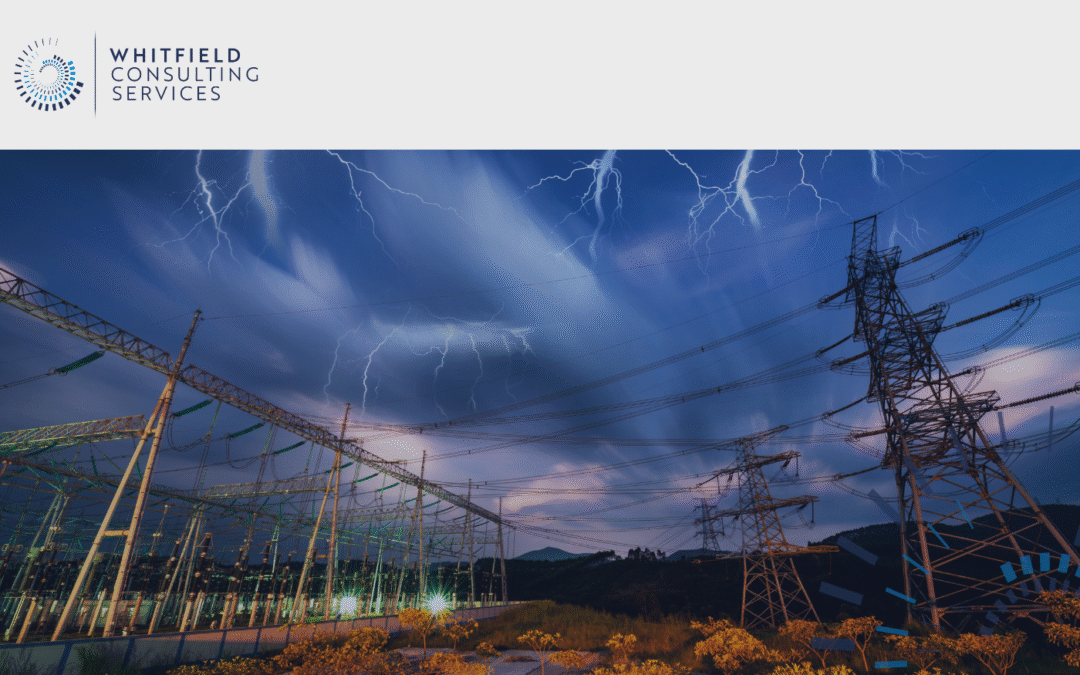Whitfield Consulting Services (WCS) is often involved in the design of substations, facilities where power is transformed between voltages and switching occurs. Substations can be dangerous places for operatives, in particular due to the rare phenomenon of arc faults. Find out more about arcing, and what design civil engineers have to do when taking arc faults into consideration.
Arc faults and arc flashes
Arc faults can occur within a substation, and especially within the switchgear that protects and isolates equipment using circuit breakers or similar, generally in high voltage systems. Fault interruptions on a live line by circuit breakers will cause sub-second fluctuations in voltage (transients). These can generate arc faults. Faults can also be caused by dust, corrosion, loose connections, gaps in insulation, wrongly installed parts and human error. Lightning during electrical storms can also be a cause. Fortunately not all are severe, but each in principle can cause an arc flash and a pressure wave called an overpressure.
Overpressure and blast loading calculations
Arc faults by definition cause overpressure, additional pressure compared to standard ambient pressure in the location considered, which in turn puts an added load on structures – in effect a blast load.
Events are contained if structures withstand the peak overpressure that results. Standard calculations exist in relation to this. The pressure potentially generated is determined by the substation equipment involved. From the perspective of a civil engineer, this is something fixed – determined by what our electrical engineering partners specify.
The geometry of the structure is also vital, in particular the volume of space for the overpressure to dissipate into. Any pressure wave will, of course, attenuate fairly rapidly, affecting a large room less severely than a smaller one. The location often prohibits a solution. Existing substations receiving upgraded equipment often cannot be expanded, and, even for new structures, additional space is frequently not available in urban areas or trackside in rail projects.
The loads generated by an arc fault will often be sufficient to cause local or global failures of load bearing elements of the building fabric which could lead to structural collapse. When dealing with existing structures we will assess the nature and thickness of materials, their age and condition, and consider options such as the possibility of adding bracing elements to existing walls or roofs, but, again, our role is to find the most cost-effective solution that will ensure the structure’s safety and robustness in the event of an arc fault.
Blast vents
Very often, the key to the solution is venting. This means adding a blast vent, an opening within the structure that exists to channel the force out of a space to where it can dissipate safely. Such a vent is sometimes accompanied by a blast duct, typically connecting the switchgear to the vent in a wall, which guides any pressure wave directly towards the vent, encouraging that outcome and safeguarding people and equipment within the room; the safety of persons outside the room must of course be taken into consideration.

Detailed placement of such systems matters also; channelling fault overpressure up towards a high vent provides an additional form of security. As well as the overall dissipation calculation, you are generally directing force towards unoccupied space. In that regard, consideration must be given to the location in which a fault may occur, and also what will happen as the blast dissipates after venting. An elevated pressure release helps ensure no-one is going to be in the path of the blast after it passes through the vent; if elevation is not possible an exclusion zone must be provided. With experience and knowledge of existing structures, and the resultant buildability and practicality of our designs for installation, including temporary works designs, WCS engineers are able to accurately place these systems to maximum effect.
Compliance and blast loading
Of course, none of this is done subjectively: civil engineering is a highly regulated discipline, and few areas are as highly regulated as mitigating the effects of blast events. WCS engineers who deal with blast loading can advise partners on precisely which requirements must be adhered to in each such project, and what measures are required to ensure compliance.
Whether your next project involves these particular considerations or not, to learn more about us, please see our portfolio page or contact page, or just get in touch directly by calling 020 3581 7847 or emailing us at info@wcs-consult.co.uk.
